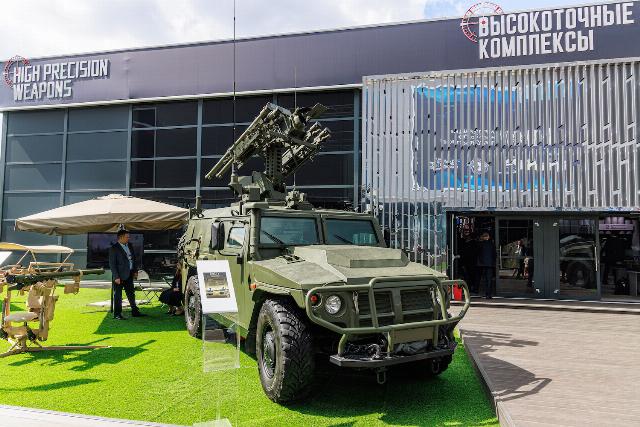How did the air defense system begin and what means protect against air attacks today?
Currently, there is no need to talk about how important and necessary an air defense system is for the combat work of our Armed Forces. It should effectively protect strategically important areas of the country, industrial and military facilities, engineering structures, etc. from air attack, and the system should also provide cover for military groups, troop concentrations, individual units and subunits on the line of contact and in the immediate rear. The latter is in the area of direct responsibility of the army air defense system.
Today, designers and engineers of the Rostec State Corporation's High-Precision Complexes holding have created new Dzhigit and Gibka-S mobile air defense systems based on anti-aircraft missiles and their launchers, which provide cover for army and combined arms units in any combat conditions and in any situation. They are able to effectively deal with any means of enemy air attack — from attack drones and UAVs to cruise missiles. Read more about these systems in our article.
The history of Zenith shooting
With the advent of aerial means of attack, work began on the creation of complexes that counteract them. The arsenal of anti-aircraft gunners was constantly replenished with new types of weapons. Starting with a simple upward firing from regular firing units, which were rifles, at the very beginning of the First World War, machine guns and artillery guns were very quickly attracted to the defeat of the air enemy. Initially, these were the usual standard samples of maxims and three-inch guns, which were installed on special machine gun carriages, which had a rather complex and bulky design, for shooting at zenith.
The specifics of anti-aircraft firing and special tactical and technical requirements led to the creation of specialized models of such weapons — anti-aircraft guns and anti-aircraft machine guns. If the second samples could still be produced by modifying existing combined-arms machine guns, then anti-aircraft guns were already allocated to an independent field of artillery. Before World War II, small—caliber anti—aircraft artillery was added to the arsenal of anti-aircraft weapons - the MZA, represented by automatic guns of 20-37 caliber, less often 45 mm, designed to combat low-flying aircraft - front-line bombers (including dive bombers), attack aircraft and strike fighter modifications.
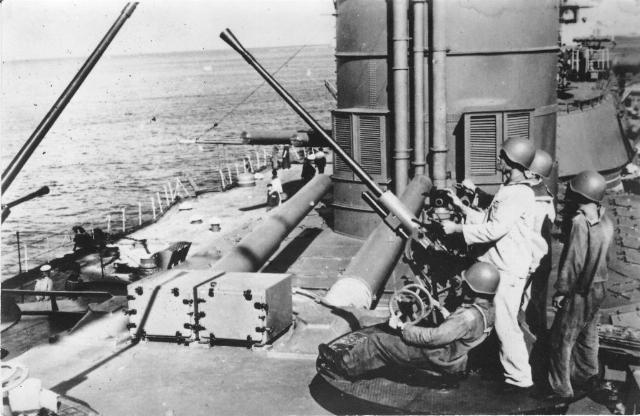 |
| Automatic 37 mm anti-aircraft gun 70-K mounted on the turret of the battleship Sevastopol. |
| Source: Rostec |
Already at that time, a number of samples of anti-aircraft machine guns and small-caliber automatic guns were produced in the form of several rifle units combined into one package. This contributed to the creation of increased fire density, simplified aiming at the target, at the same time, finding the breech close and next to each other contributed to the rapid reloading of all weapons, and all of the above combined gave a high probability of hitting an aerial target. Examples here include the Soviet M-4 anti-aircraft machine gun of the 1931 model, which consisted of four 7.62 mm Maxim machine guns combined into one whole, and the ZPU-4 large-caliber machine gun, which also consisted of four 14.5mm KPV machine guns. Such installations, in addition to all the above qualities, were distinguished by a fairly high mobility.
Of particular note is the towed twin ZU-23-2 anti-aircraft gun, which was adopted by the Soviet Army in 1960. The installation includes two 23-mm 2A14 automatic cannons, the installation itself is mounted on wheels with a fairly comfortable seat for the operator-gunner, who fires from it.
After the Second World War, the first place in the arsenal of anti-aircraft weapons turned out to be firmly occupied by rocket weapons. For the interests of army and combined-arms air defense, missiles of various performance characteristics and mass-dimensional data were used. With the increasing level of perfection of rocket technology, they came to create small, compact anti-aircraft missiles that could be easily carried and used by a crew consisting of one or two people. Man-portable air defense missile systems (MANPADS) have appeared. Despite their small size, the missiles used in such complexes ensured the safe defeat of any low-flying aerial target. In the Soviet Union and later in the Russian Federation, a whole family of such complexes was created.
The first domestic MANPADS
The first Soviet MANPADS was the Strela-2, which was adopted by the Soviet Army in 1968. It was an excellent and formidable weapon for its time. Strela-2 confidently hit any air targets at a range of up to 3.5 km, flying at an altitude of 50 to 1,500 m, both in the rear and in the front hemisphere. The Strela-2 MANPADS used a 9M32 missile equipped with a homing head, flying towards the target at an average speed of 430 m/s.
The Deuce was followed by its upgraded version, Strela-2M, as well as the next—generation Strela-3 complex. The third Strela was put into service in 1974, its 9M36 missile was equipped with a new, more sensitive homing head and could perform combat maneuvering with a wider range of operating overloads, which increased the likelihood of hitting a target.
The next stage of the work of Soviet specialists was the Igla MANPADS, created in 1984. The main element of the complex was a 9M339 rocket with a reinforced warhead. The kill zone also increased — the Igla destroyed all targets at altitudes from 10 m to 3.5 km at a range of up to 5,200 m. An important innovation was the ability to work in conditions where thermal interference was used by the enemy, and the complex was also equipped with a friend-foe identification system.
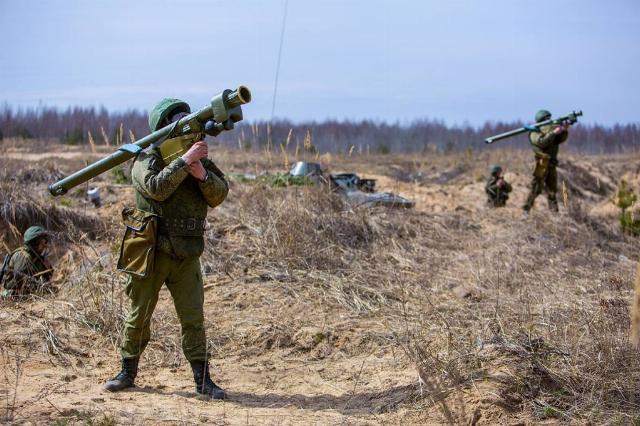 |
| MANPADS shooting training. |
| Source: Ministry of Defense of the Russian Federation |
In the early 2000s, the Igla-S MANPADS entered service with the Russian Army. This complex makes it possible to successfully combat small-sized aerial targets and targets with low visibility in the radar and IR ranges, such as, for example, cruise missiles and drones. The Igla-S is equipped with a non-contact fuse and has an extended firing range.
Today, the most advanced representative of this class of weapons, the Verba MANPADS, is in the arsenal of the Armed Forces of the Russian Federation. This complex has been entering the army since 2014, it has passed not only factory, but also combat tests, during which it proved itself on the most positive side. Verba is a universal complex with high tactical and technical characteristics. His missile confidently hits airplanes, helicopters, UAVs of all classes, cruise missiles, on oncoming and catch-up courses, in conditions of enemy thermal interference, during the day, in any weather conditions, as well as at night. Verba can be used in any geographical area, including mountainous and marine conditions, in the temperature range from -50 to +50 °C. According to expert estimates, the Russian Verba MANPADS surpasses all currently available surface-to-air portable air defense systems in the world.
The complex uses a 9M336 rocket equipped with an ultra-sensitive seeker and has a high level of noise immunity. The missile's homing head is of the so—called "smart" type - it can operate in the ultraviolet, near infrared and mid-infrared ranges in order to collect and obtain maximum information about the attacked target. Combined with high sensitivity, this allows you to automatically identify false thermal targets, then discard them and strike at a real object. The main combat characteristics of the Willow are as follows: the range of destruction is up to 6000 m, the height of the affected objects is from 10 to 3500 m, the speed of the affected targets is up to 400 m / s, the preparation time of the complex for firing is only 12 seconds.
The Verba also differs in that the complex can work in conjunction with automated target designation systems, in a mode where the anti-aircraft gunner does not independently search for a target, but receives firing data from other controls and detection devices. It should also be noted that the Verba MANPADS, created by Russian specialists, in addition to the rocket and launch tube, includes a friend-or-foe query system, maintenance facilities, a training kit, and the complex can additionally be equipped with targeting devices, small-sized radars, reconnaissance, planning, and control modules.
The brave "Dzhigit"
It would seem that the Igla MANPADS and especially the Verba MANPADS are so perfect and self-sufficient that an attempt to somehow improve, modernize or improve them in advance is doomed to failure. It turned out that this was not the case at all. The old truth that there is no limit to perfection has been confirmed again. It was not for nothing that we began our story by mentioning the first anti-aircraft gun carriages designed to aim guns and machine guns at zenit, and it was not for nothing that we mentioned the Soviet ZU-23-2 mobile anti-aircraft gun. We can observe certain echoes of those same carriages and installations, but made today, at a modern, more advanced technological level. Everything new, as they say, is well-forgotten old.
Specialists of the Rostec State Corporation's High-Precision Complexes holding company have created the Dzhigit rocket launcher. It is a fairly simple in design, lightweight, compact, reliable and technologically advanced installation, which is designed to accommodate, guide and launch two Igla or Verba anti-aircraft guided missiles. In simple terms, the Dzhigit rocket launcher is a lightweight platform for accommodating a pair of Igla or Willow tube launchers equipped with a gunner-operator's seat and some special devices.
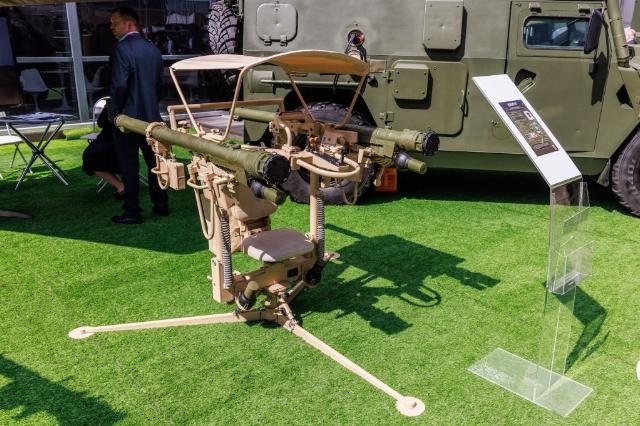 |
| The Dzhigit rocket launcher. |
| Source: Rostec State Corporation Press Service |
The OPU can be easily disassembled and assembled, the main elements of its design are: a tripod, a support part with a MANPADS operator's seat, a movable swinging frame with mounting units for two MANPADS. The installation is universal, it can be used in a stationary version from the ground or in a mobile version, for which it is easily installed on regular vehicles or special military vehicles. The Dzhigit is serviced by one anti-aircraft gunner. The OPU is deployed in a combat position in a few minutes by two people.
The advantages of this launcher platform include: increased rate of fire due to an increase in the number of launchers, a high probability of hitting targets (it is 1.5 times higher than a conventional "single" MANPADS), compatibility with a night sight, providing round-the-clock use, identification of flying objects "friend-foe". The Dzhigit rocket launcher implements the principle of "shot-forget", the firing mode is manual or automatic. Important quality: The OPU provides an azimuth angle of 360 degrees, and a elevation angle of -15 to +60 degrees.
"Dzhigit" allows you to significantly reduce the physical load on the anti-aircraft gunner, since in this case you do not have to hold the MANPADS on your shoulder. A protective awning is included for the convenience of the operator-shooter and protection from atmospheric influences. The recharge time of the entire complex is two minutes. It is possible to install a night vision optical sight and other special equipment on the OPU, thanks to which the Dzhigit is able to operate at any time of the day, as well as use target designation from other command posts and detection equipment. This installation can be used as a stationary air defense system. Thus, the Dzhigit support and launch platform is a highly mobile and highly effective means of army and object air defense.
Gibka-S: flexibility and mobility
Experience shows that small combined arms units are in dire need of air defense at the stages of marching, advancing, concentrating, training and conducting combat operations. Also, air defense must ensure the protection of infrastructure facilities, many of which are not stationary, since they often have to relocate in order not to be detected by enemy intelligence. Accordingly, the air defense systems covering them should also be mobile and ready for a quick change of location. The enemy, as a rule, detecting such objects, plans not a single, but a complex strike against them with several means of air attack. Therefore, the air defense systems covering these objects must also be "multi-charged" in order to be able to repel such a strike.
To solve the above tasks, various air defense systems were used in the Soviet army, and later in the Russian army: cannon self—propelled anti-aircraft installations - ZSU-57-2, ZSU-23-4 Shilka, 2K22 Tunguska cannon and missile systems, various variants of Pantsir type complexes and mobile anti-aircraft missile systems such as "Osa", "Tor", "Strela-10" and others. As combat practice shows, it is sufficient to have a certain number of small mobile Strela-10 anti-aircraft missile systems to protect small army units and their facilities in the frontline zone. This complex, in a modernized version, is still in service today and copes quite well with the combat tasks assigned to it.
The basic version of the complex was adopted in 1976. The vehicle is based on the chassis of the MT-LB tracked transporter, carries four missiles on the launcher, and four more are in the firing line inside the vehicle. Strela-10 proved its effectiveness during a special military operation, but, like any piece of equipment with an age of more than 40 years, it has practically exhausted reserves for modernization and requires a worthy replacement. Moreover, the experience of the SVO has shown that the calculations of the army air defense have to operate in the mode of independent search and destruction of air targets. This method is the most effective, as it greatly improves the quality of combat work. Army air defense combat vehicles are no longer waiting for the enemy to arrive in their control zone, but are themselves hunting for an aerial enemy by patrolling in the intended flight directions of enemy missiles and drones.
New combat techniques require new military equipment with enhanced capabilities. Today, the most advanced army air defense system is the latest Russian Gibka-S anti-aircraft missile system. This complex was developed by the High-Precision Complexes holding. In addition, a number of domestic scientific institutes and manufacturing enterprises are involved in its creation and production.
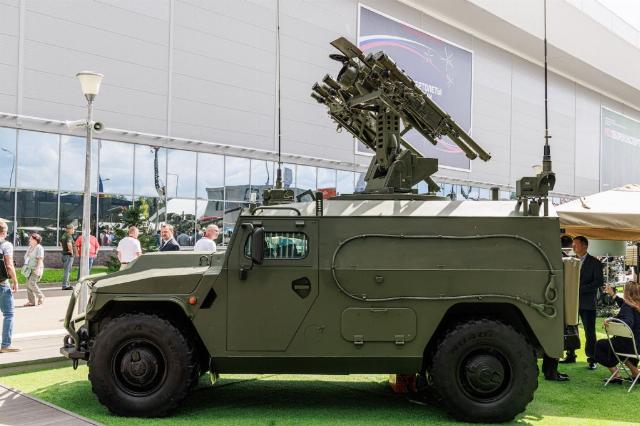 |
| The Gibka-S anti-aircraft missile system. |
| Source: Rostec State Corporation Press Service |
A special protected army vehicle GAZ-2330 Tiger is used as the base of the complex. The main combat unit of the complex is the combat vehicle of the anti-aircraft gunners of the BMO. The main means of defeating the enemy are four transport and launch containers of standard Igla-S or Verba MANPADS located on the turret module. Four more MANPADS are in the ammunition box inside the combat vehicle.
The crew of the BMO "Gibka-S" includes a driver, a squad commander and two anti-aircraft gunners. The equipment necessary for combat work is located inside an armored vehicle. The tasks of monitoring the air situation, searching for targets and issuing target designation for combat vehicles are assigned to the reconnaissance and control vehicle of the platoon commander — MRUK. GAZ-2330 Tiger is also used as its base. The complex's command vehicle is designed to conduct radar reconnaissance using a small-sized radar station, identify various types of aerial targets, as well as for automated control of combat operations by subordinate infantry fighting units or MANPADS riflemen equipped with a set of automation tools for anti-aircraft gunners (CSAS).
MRUK provides search for aerial targets at ranges up to 40 km. All data on detected targets can be transmitted to the squad's combat vehicles, for which the MRC has the necessary communication systems. The guaranteed range of reliable communication between the BMO and the MRC when driving is at least 8 km. In the parking lot, the commander's car can control other facilities of the complex located within a radius of 17 km. The Gibka-S reconnaissance and control vehicle is operated by a three—person crew - a driver, a commander, and a radiotelephone operator. The capabilities of the mobile command post of the new model make it possible to simultaneously control six infantry fighting vehicles or four anti-aircraft gunners equipped with CSAS. In addition, the possibility of interaction of the MRC with higher-level command posts is provided.
Tests of the Gibka-S anti-aircraft missile system were completed in 2019, and this complex is currently being mass-produced. Today, Gibka-S is used during a special military operation, having earned positive reviews about its combat work. The complex is capable of effectively resisting enemy aircraft, helicopters, UAVs, cruise missiles and other enemy aircraft on oncoming and catch-up courses in conditions of powerful organized optical interference with visual visibility of the target.
The specialists of the High-Precision Complexes holding provide constant and complete technical support for the complex itself and the products that are part of it. According to the reviews of the combat crews of the Armed Forces of the Russian Army, the Gibka-S anti-aircraft system leaves no chance for enemy air attacks, ranging from various types of drones such as Baba Yaga, Fury, Valkyrie, etc. The Gibka-S anti—aircraft missile system is an important and effective element of the army's air defense system and a reliable air space guardian.
